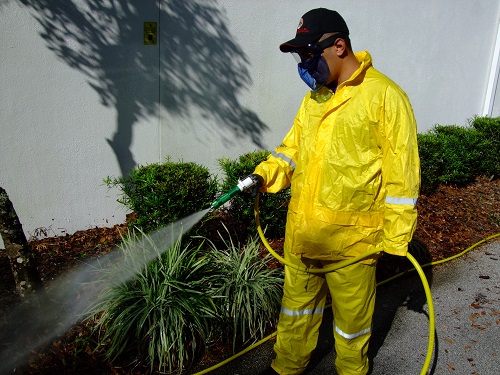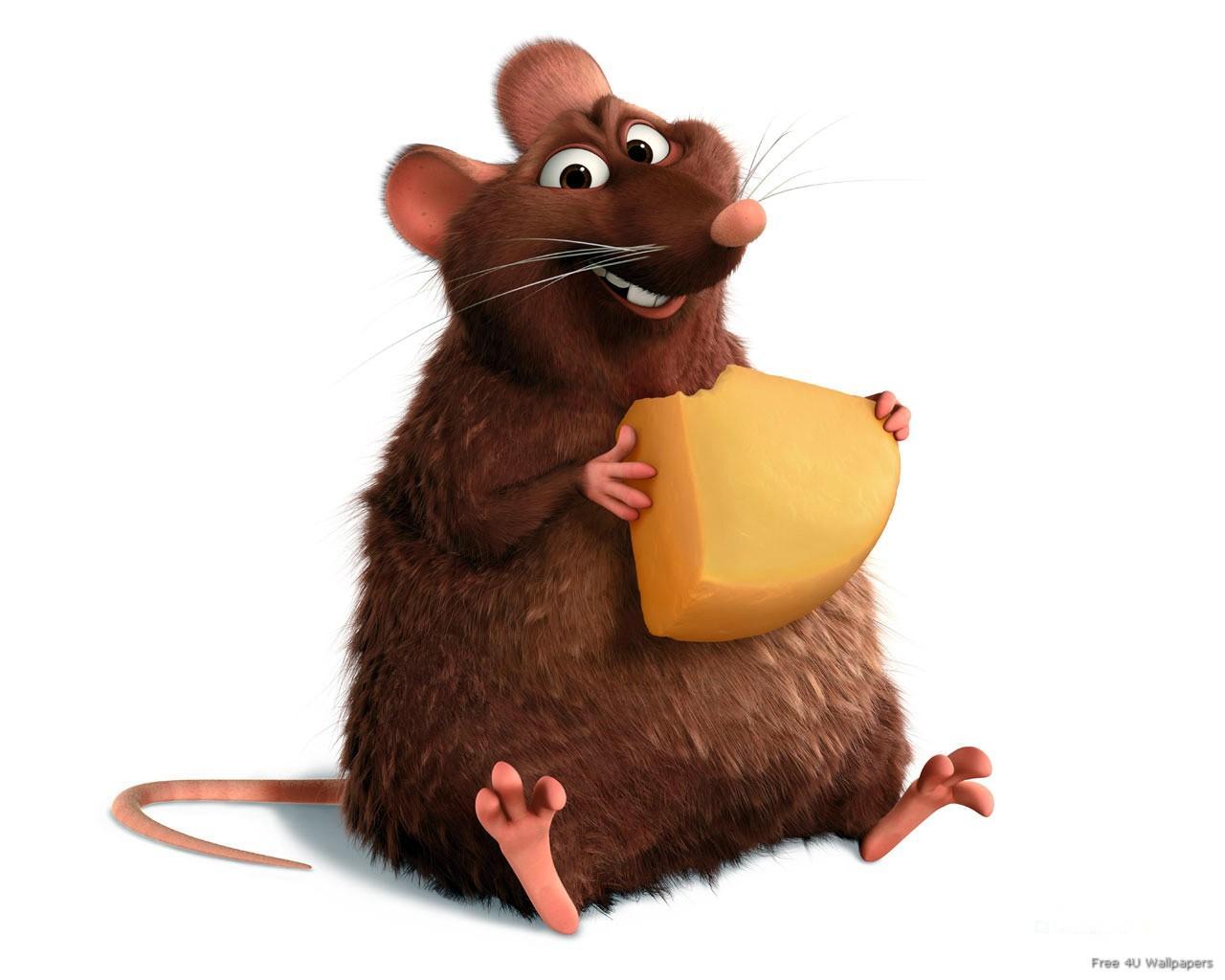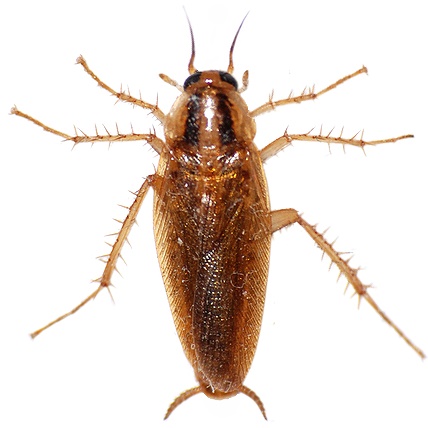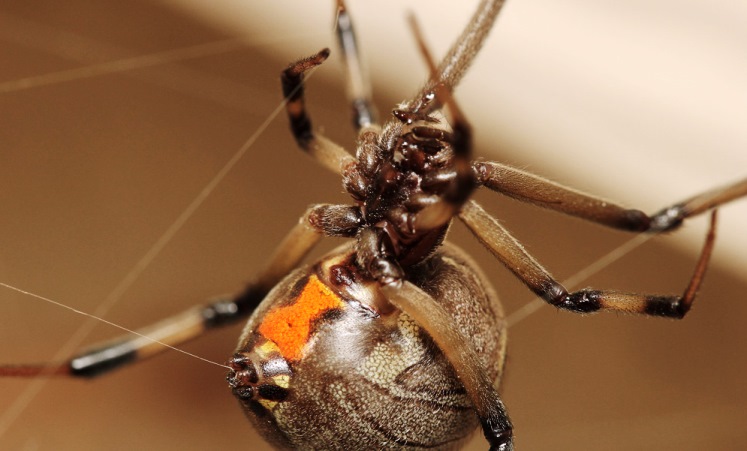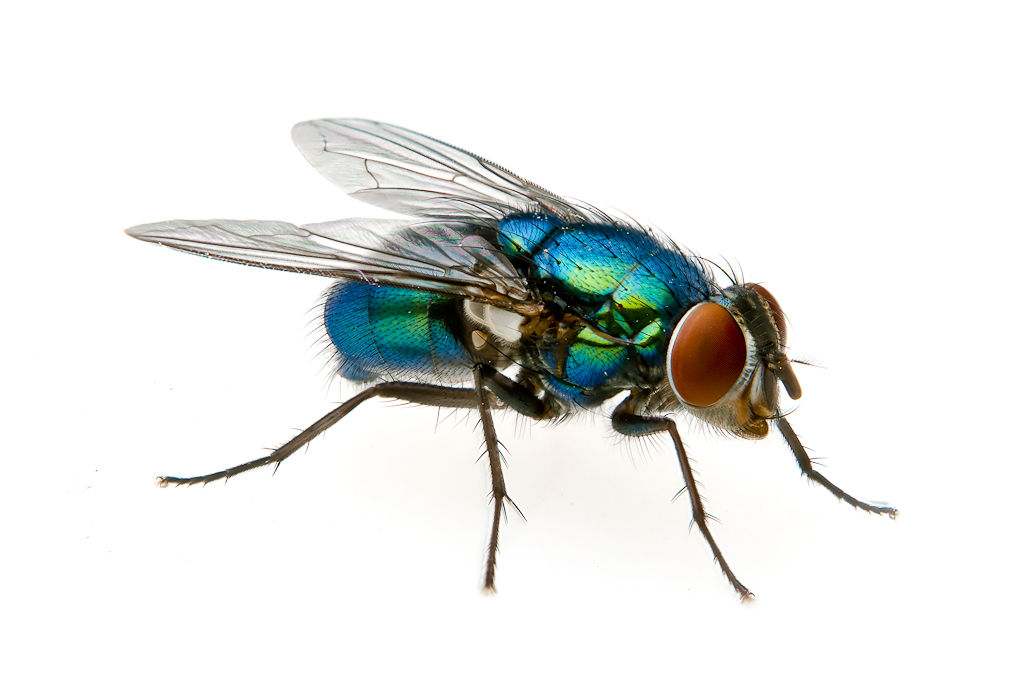Pest Education
Facts about Pests
Florida is an amazing state to live in with the sub-tropical weather all year round, and beaches on all sides there is no place like it, however there is the flip side to living here, which are the pests that are indigenous to the region , and most people even though they have lived here all their lives, still cannot deal with the fact that this comes as part of the territory of living in such warm and beautiful environment. Now there allot of myths, and misunderstandings about the different pests that we all encounter here from time to time, whether it is in our business life, or at home, and the more educated our clients are about the pests they come across, and how to prevent them in the first place, the easier life is for everyone concerned not only for your sanity, but financially too.
We feel it's important that the more we help our clients understand this issue through educating them about the pests they are dealing with, the easier it is on them on how to best handle the situation in the future, and this section deals with just that, the aim being the more you are aware of your surroundings, the more likely you are to prevent future issues from reoccurring. This section is not to teach our clients the pest control profession, but for them to have a better understanding of how to be more proactive, and avoid attracting pests in to their businesses, and homes in general.
So what is considered as a Pest?
A pest is something that is harmful to humans, our food sources, and our structures, and considered harmful to the environment in general.
Another important fact to remember is not everything that slithers along the ground, or on all fours is considered as a pest as some people might like to think. There are allot of beneficial animals, and insects in our environment that are crucial to the eco-system, like Bee's for instance, which are rightfully protected now, because without Bee's our whole food network would collapse, other animals like Snakes, Possums, and Raccoons which can be considered as pests in some circumstances, but overall are still crucial to the environment, so don't be too quick to categorize every creature as a pest, just because it doesn't fit in with your perceptions, everything has a part to play in our environment. The point being the more educated you are about what is a pest and what isn't, then the more likely to be more tolerant of other species in our eco-system.
What is Termidor, and why is it essential for my home or business?
Termidor Insecticide is a product that was launched over 10 years ago by BASF to help control general insect pests around the exterior perimeters only, and should never be used on the interior of any building. Prior to this product release Termidor was specifically developed to control Termites, but BASF realized the broader potential of the product for other pest control applications, and finally released it to help control ants, cockroaches, and other general insect pests around the exterior of businesses and homes. This product is unique in that the molecular properties of the chemical when applied to soil on the exterior perimeter will combine with the soil molecules, and once dried in place prevents the chemical from being washed away, so it doesn’t matter how much it rains after application it will stay active for approximately 9 to 10 months without reapplication. Another thing to note is that Termidor can be applied to all trees, shrubs, mulch beds, soil areas, flower beds, grassed areas, etc. without any adverse effects on any plant life, so it is very safe to apply.
Termidor is an essential treatment that we highly recommend to all our businesses, and residential clients for long term protection against most insect pest issues. The key reason being that all ants and cockroaches breed outside in soil and mulch beds and can eventually gain access to the interior of a building, either through trees, shrubs overhanging, and leaning on to a building structure, and even through general proofing issues around a building, which could be gaps under doors, weak window seals, etc. So in order to prevent this issue from happening it is wiser to be more proactive and prevent the insect problems at their source and control them before they establish themselves in your building, which not only can become more costly to control once established, but today most people want to minimize the use of chemicals in their homes, so this helps to alleviate these issues all together.
In summary Termidor may be an expensive treatment to have applied around the exterior of your property, but long term it is worth its weight in gold, and will actually cost you less over time, and prevent future insect pest issues from being established around the exterior of your property, and eliminate problems on the interior. The main thing to remember is Termidor only needs to be applied once annually around your property, whereas most homes and businesses are used to having monthly pest control services to fix the same pest issues, which tend to be less efficient in overall control of most insect pests around the exterior perimeters.
Proofing & Sanitation
Proofing plays a crucial role in preventing pests from gaining access into your home, or business. So what do we mean by proofing, well its as simple as sealing off gaps around windows by re-calking if need be, ensuring you have good seals around door frames, and especially door bases, and checking to see if the rest of the building structure is intact, and not showing cracks in wall structures, and foundations. The lack of structural proofing is one of the main reasons for pest ingress in to building, and needs to prioritized at the top of your list.
Sanitation is another crucial step that is overlooked for pest prevention for example: if trash outside your property is mostly outside the trash can's and compactors, then that is more likely to draw all kinds of pests, such as rats, mice, and a variety of insects towards your building. If you have leaking water pipes, or over flow drainage pipes that are constantly dripping water that will attract pests too. Cleanliness inside the property is extremely important, food crumbs, and spillages lead to additional pest problems, and then expecting an exterminator to bait, or spray against that is a lost cause, and will never solve the issue due to the competition with the bait.
Another fact in relation to the two topics above is most rodents, and insects like flies for instance have a heightened sense of smell, and can detect food sources from long distances, in some cases from several miles away from the source, they have far more acute senses than we do, so its important to consider this when you want to prevent future pest issues.
Rats & Mice
Rat's and Mice have existed on this planet for between 2 to 4 million years, and are considered the most successful mammal species in the world, due to their ability to adapt to their environment, and they can successfully exist in the coldest to the hottest temperate zones anywhere in the world. Over 2,230 different species exist, 3 of which are the most common that we encounter, which are the Norway Rat, Roof Rat, and the Common House Mouse.
The main reasons Rats and Mice are a major pest is not only do they compete with humans for food, but they are major carriers of a whole host of diseases, parasites, and virus's easily transmittable to humans, also they cause a huge amount of structural damage to building when they establish themselves in structure.
Rat's Incisor's (Teeth) grow at a rate of 0.4mm per day, and are extremely strong, and measured at a rate stronger than 5 gauge steel. Rat's have to constantly gnaw against other harder materials like concrete, other metals, and hard plastics in order to keep the teeth at a reasonable size, and sharp.
Female Rat's can only generally live for up to 6 to 12 months, but in that time she will produce 3 to 6 litters consisting of 6 to 12 pup's at a time, their gestation period is 21 to 25 days. ( Do the math! )
The main physical difference's between Norway rat's to roof rat's is Norway rat's are large and robust dark brown in color, whereas the roof rat is more slender and sleek, and generally uniformly black. Also roof rat's tend to like scaling up on higher levels, whereas Norway rat's tend to like being on lower ground level areas.
Mice tend to stay local to their nesting sites approximately a distance of 30 feet normally, but will wonder further if a need arises. The females with tend to have litters anywhere from 6 to 8 in their life time, consisting of 2 to 13 pup's, gestation periods are 18 to 21 days.
An important fact to know about rat's and mice is, rat's can squeeze through gaps as small as 3/4 of an inch, where mice can squeeze through gaps from 1/4 to 1/2 of an inch, that is why they are very successful at gaining entry in to areas most people would consider unlikely, so this is where the importance of proofing comes into play.
Rat's need to drink at least 2 ounces of water per day to survive, whereas mice generally get their water out of the foods they tend to eat, but will drink readily available water as they need it.
The key thing to remember here is that Rodents essentially need three things to thrive in any environment (1) A sustainable food source, (2) An adequate water supply, and (3) Shelter from other predators , and somewhere they can breed without interference. So the main lesson here is, if you can prevent this triangle from occurring it makes it difficult for rat's to establish themselves and thrive.
Cockroaches
Cockroaches are among the oldest surviving insects forms on the planet, and they have diversified extensively in the last 300 million years. There are approximately 4,500 different species identified, and still another 5,000 remain undiscovered.
There are so many varieties of cockroaches, and some of the most common that we encounter on a regular basis are: German, which is the most common, American, Australian, Oriental, Smokey Brown, Brown Banded, Surinam, Florida woods, and Asian cockroaches to name just a few, there are many more that can be found in Florida alone.
Cockroaches are omnivorous meaning they will pretty much eat anything that presents itself as a food source, so they can be found any from the sewers, to highest levels of a multi story office building, cockroaches can be found pretty much anywhere on this planet, where most other insects just simply cold not exist, so eliminating them is an impossibility, the only thing we can do is hope to control them around our homes and businesses to the best of our ability, through good sanitation, proofing, and insecticidal management.
The best methods of controlling cockroaches is using the correct and affective baiting programs, coupled with regular insecticidal spray applications using a combination of IGR's ( Insect Growth Regulators), knockdown, and residual chemicals.
Cockroaches are responsible for a large majority of food poisoning cases associated with food production, restaurants, and homes around the world, as they are a carrier of a huge amount of different pathogens, diseases, parasites, and virus's, which are generally found on the body and legs of the insect not to mention their gut. So has a species they are a huge threat to all of us because they are a vector of disease, and need to be controlled at all cost.
Ants
Ant's have to be one of the most fascinating insects on the planet, and amazing survivors just based on the sheer numbers of the species, currently there are more than 12,000 of ant's that have been identified so far, and there are many more yet to be discovered.
Ant's can be found in all terrestrial regions around the world, from the subarctic to dry deserts, but mostly they are found in the tropics. The interesting thing to remember is that only a very small percentage are considered as pests, the vast majority are extremely crucial and beneficial to the eco-system, as they are responsible for helping in the decomposition, and clean up of most of the forests, and jungle regions around the world, not only that they also help in keeping a balance of different species of insects in these areas too.
However after talking about the benefits of ant's in the eco-system, they are still considered as pests when it comes to contact with humans, and can be a huge nuisance to most businesses, and residential properties alike. The problem with ant's is the huge numbers within their colonies, which can range into the thousands depending on the species. There are approximately 1,000 species in North America alone, of which 50 species that infest structures, and about 10 species that are considered major pests to people.
Some of the most common species we deal with on a daily bases are the Imported Fire Ant's, Acrobat Ant's, Argentine Ant's, Asian Needle Ant's, Carpenter Ant's, Crazy Ant's, Robust Crazy Ant's, Ghost Ant's, Bigheaded Ant's, Carribbean Crazy Ant's, Dark Rover Ant's, Field Ant's, Harvester Ant's, and European Fire Ant's to name just a few.
The detrimental aspects of ant's is not only can they push out other predator's in an environment they colonize, but they can cause damage to trees like the leaf cutter ant's, to causing damage to structures, by destroying wood, fabrics, and contaminating food, not to mention there has been allot of cases of ant's causing anaphylactic shock in victims stung by Fire ant's as an example.
Bed Bugs
Bed Bugs have now become one of the most prolific threats to homes, and businesses throughout the US within the past 10 years, and the most feared pests to encounter for good reasons. Not only are they creepy at the thought, but the thoughts of them crawling all over you in the middle of the night, and feeding on your blood is the main fear, they can also entirely infest homes, and businesses, which generally tend to be Hotels, Motels, B&B's, etc., and are extremely difficult and costly to control more than any other pest.
It's also very important to note that the main reason for the spread of bed bugs throughout the entire United States is because of the increase in people travelling form not only state to state, but around the world. The initial introductions of bed bugs came from Europe, and the South American countries, and are well established here now. Bed Bugs are hitchhikers, and once established on an individual can get inside the seams of clothing, shoes, baggage, etc., and be transported with them from one placed to another. So that is something to bare on mind when you are travelling by either a plane, train, ship, or bus, it makes you wonder who was sitting there before you, and are you likely to pick something up from the seat, and take it with you. it sounds dramatic, but its a true fact of how these insects have spread from one place to another, and from country to country.
If you are unlucky enough to have your home, or business infested with Bed Bugs, it's important that you are not drawn into some of the costly programs that some companies use to try and treat for these pests. Which include heat treatments, freezing treatments, using dogs for detection, fogging, mattress covers, and paying for monitors, etc., to detect Bed Bug activity in your home, or business. Unfortunately since the outbreak and spread of Bed Bugs over the past few years, there have been allot of companies jumping on the bandwagon trying to profit from it. Most of these methods have no merit, and have no proven protection, or prevention of Bed Bugs. After treating for Bed Bugs for over 25 years, we have found that there is no better way to treat for Beg Bugs than the old fashioned chemical applications that matter for long term elimination, and prevention, and most importantly are less costly, it's bad enough dealing with the stress of having Bed Bugs in your home, or business you don't need the stress of the cost of eliminating them.
Bed Bugs behave similar to Mosquitoes in the way they detect their host to feed on, they can sense body heat, and even detect where blood is flowing through the skin, also through vibration of a host close by, and even detecting carbon dioxide expelled by breathing. This is why the tend to stay close to their victim by infesting the bed of a host, mainly the headboard, and mattress.
Bed Bugs can live up to a year without feeding, a female generally will lay 4 to 5 eggs after every feeding, and she will lay hundreds eggs in her lifetime. Baby Bed Bugs are called Nymphs, and immediately after hatching must feed, they are also identical to the adults, and go through at least five stages of shedding of their skins into the adult stage, and the life cycle continues. Infestations can grow very fast within several months after introduction. The eggs are tiny milky white, and look like miniature rice grains, and are laid by the female with a very sticky excretion, so they tend to stick to anything they are laid on, and easily picked up and transferred from one place to another.
Bed Bugs were originally associated with birds, mainly within their nests, birds are responsible for the transfer of allot of insects, mites, and virus's. There are over 70 different species of Bed Bugs, but the two most common Beg Bugs encountered here in the United States are the Common Bed Bug, and the Tropical Bed Bug. The reason for this escalation in Bed Bug activity has mainly been in the third world countries with poor housing, shacks, and shanty town dwellings, close association with people, and birds nesting in these areas has led to an over flow of Bed Bugs, and the eventual spread of this insect in populated areas.
How to avoid spider issues around your property
Spiders undeservedly are amongst one of the most hated insect species for most humans, even though they do not transmit any virus’s, allergens, or diseases to humans like other insects, and they do not cause and damage to property, or food, but can look unsightly on building structures due to their web build up, and increased spider numbers. The main issue for most people is the psychological fear of spiders, as they do look menacing to most people, and having a reputation that is undeserved, as they are actually very beneficial to humans in helping to control other insect pests, like flies, mosquitoes, and other crawling insects.
There are approximately over 40,000 identified species of spiders around the world, and triple this number that have still not been identified yet. In North America alone we have around 3.700 species. The two most common spider species most people have a fear of in the US are the Brown Recluse, and the Black Widow spiders, which have a deserved reputation by causing not only toxic bites, but serious wounds like the ones from the Recluse Spider. However it should be noted that spiders do not go out of their way to attack humans, and will only do so as a final defensive response, and the vast majority of spider bites are completely non-toxic to humans.
Now that you are a little more informed about spiders, their presence and web build up around a property is still deemed as unacceptable, and can destroy the look of a structure, or home. Some of the simple steps you can take to avoid spiders building up around the structure of your building are firstly avoid unnecessary lighting outside in the evening, the main reason for this is that spiders like most other insects are drawn to lighting, as it attracts their food source, which are other insects, like flies, and mosquitoes, so spiders will tend to build up webbing to catch their prey around exterior lighting units, and if allowed will continue to build up and spread. The second thing is that you should carry out regular housekeeping on the exterior of your building at least once per month by wiping down webbing build up, which slows spiders down dramatically from gaining ground around the building. These simple steps can be done to save time and money, and avoiding paying an exterminator to come in and do the same thing. One final thing to remember is most spiders deposit egg cases around your structure, and depending on the species, can contain several hundred eggs, which can spread very quickly around the rest of your property within a few months.
Flies
Flies are not only one of the most annoying of insects that pester us in our daily lives, they are also a serious pest responsible for the spreading of many pathogens, parasites, and diseases like Salmonella, Amoebic Dysentery, Intestinal Worms, and many more, by infecting our food, wounds, even through our eyes, nasal passages, etc., and shouldn't be taken lightly.
There are a huge variety of flies to consider ranging from the common house fly, lesser house fly, to fruit flies, filter, or moth flies, cluster flies, blow flies, also known as (Blue and Green bottles flies), horse flies, deer flies, gnats, midges, and so many more. Each of these varieties of flies has some impact on humans, and as already mentioned in the previous paragraph carry a variety of pathogens, parasites, and diseases that can seriously impact our health.
The common house, and lesser house flies tend to be associated with breeding in rotting vegetation, fecal matter, sewers and even corpses, and can transfer diseases simply by walking on food and transferring disease, they will also infect food by regurgitating their saliva on to it, which works as an acid to break down the food in to liquid form, which they will then suck back up to feed. This is how pathogens, and diseases are transferred externally, and through their gut.
Fruit flies, and filter/moth flies are more associated with stagnant water, or fermenting liquids, and sludge, which they use as a breeding medium. The larvae will hatch and feed on the properties in the liquid, until they develop into adult flies. The problem with these flies is that they can contaminate all kinds of foods, drinks, and food preparation areas through transfer similar to house flies, and the important thing to remember is where they tend to breed, which can be areas ranging from sewer systems, stagnant pools of liquid, to sludge building up under food preparation areas, toilets, sinks, and the like. So this is one of the most important flies that tends to affect restaurants, hotels, and other food based industries.
Blow flies is another serious fly to be concerned about, these types of flies are normally associated with corpses, and will produce a huge number of larvae (maggots) once a corpse is located in order to break down the flesh, and continue the breeding process. Another thing to remember with these flies is they can detect a corpse from around 15 miles away, especially in warm or hot weather.
The are so many flies that can be discussed here, but we have mentioned some of the most common, and the most important to us that affect our daily lives. the key thing to remember here is that good sanitation is a crucial factor to consider in order to prevent most of the above named flies, employing better cleaning regiments, whether in the home, or business is one of the best ways to avoid issues with flies, also using fly control methods like fly lights, and many other methods can help in this process too.



